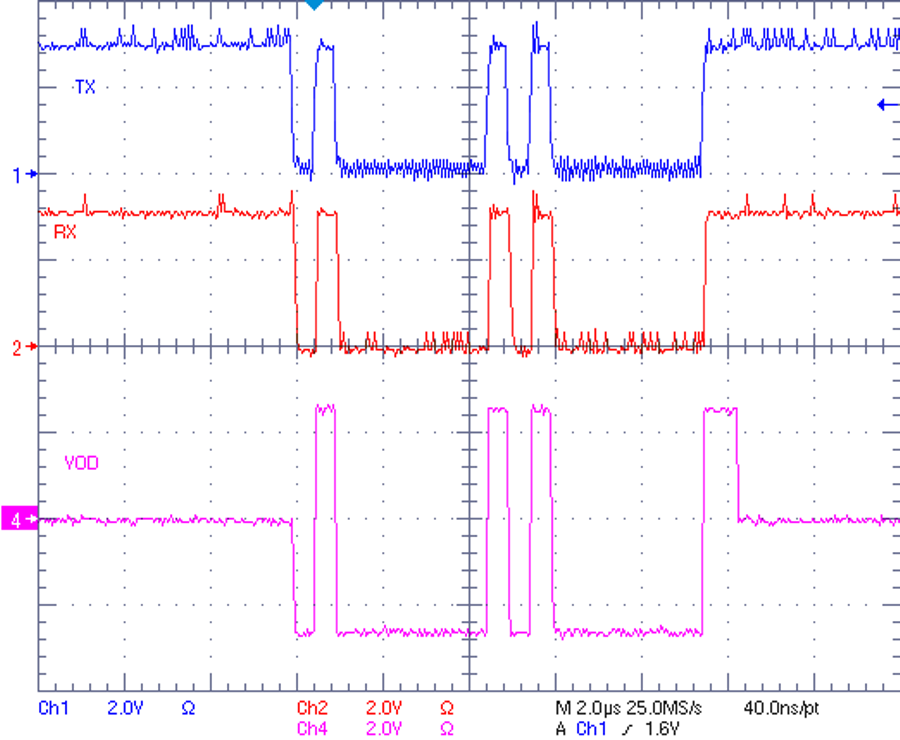SLLA574 March 2022 THVD1406 , THVD1426
2.1 Test One: Auto Direction in Action
In the first test, one general purpose half-duplex RS-485 EVM is used with a THVD1426 device populated. The board is terminated with 120-Ω resistor and powered by 3.3-V. By setting the SHDN pin (pin 2) high and the REB pin (pin 3) low, the device is active and the receiver is always on. A string 0x0101h in hexadecimal format with 2,000,000 baud rate is chosen to be transmitted. In measurement, three locations are probed on the board - input data (pin 4), bus pins (pin 6 and 7), and received data (pin 1). In Figure 2-2, channel 1 is input data with the label TX, while channel 2 is output data labeled RX. The bus signal VOD (channel 4) is taken by a differential probe. These test results show that the driver is turned on as the input signal toggles from high to low. After transmission finishes, the driver releases the bus. The bus becomes high impedance and the bus voltage is pulled together by termination
 Figure 2-2 Auto Direction Test of
THVD1426
Figure 2-2 Auto Direction Test of
THVD1426